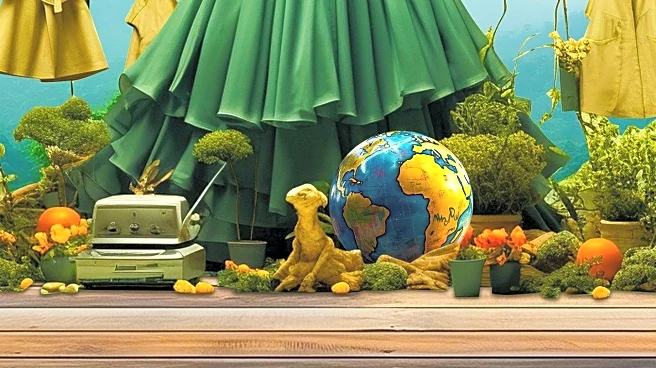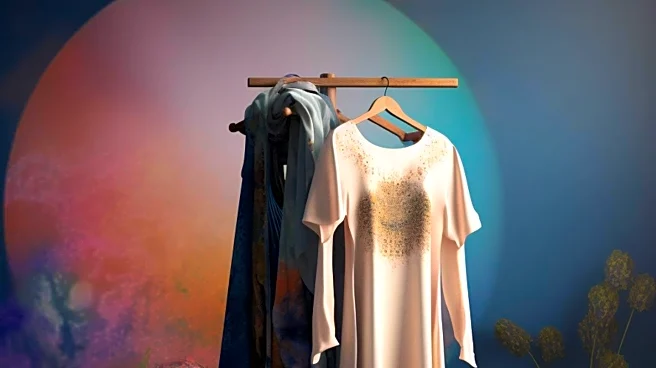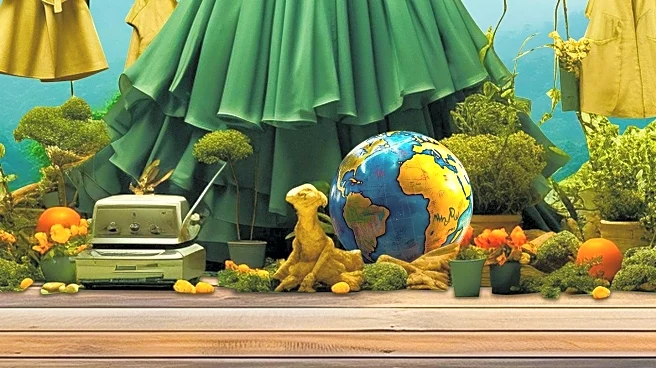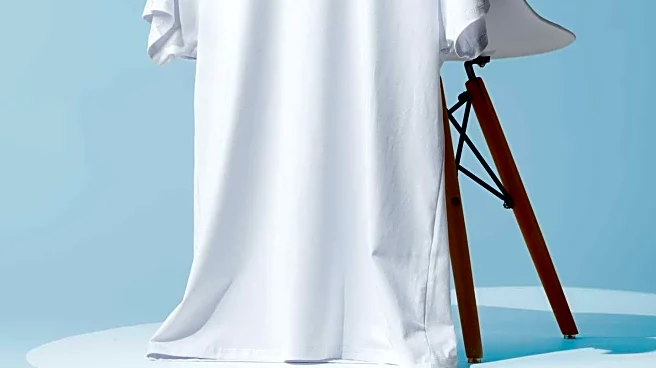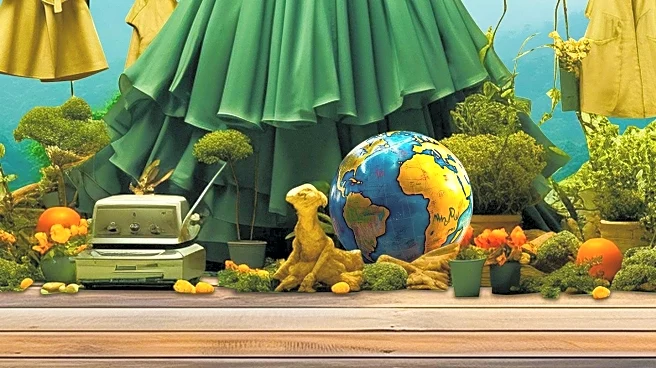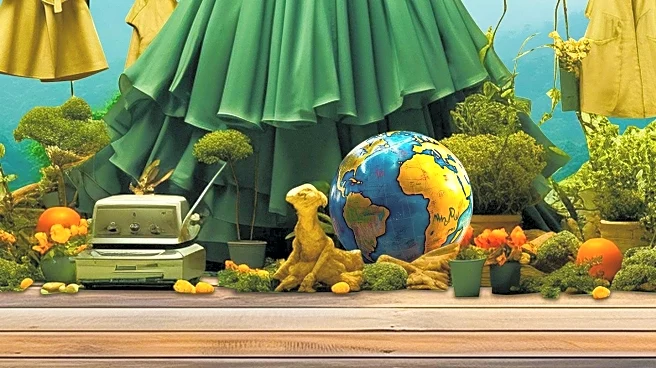What's Happening?
Circular fashion is an innovative approach to clothing production and consumption that aims to eliminate waste and maximize resource efficiency. Unlike the traditional linear model of 'take-make-dispose,'
circular fashion follows a closed-loop system where materials and products are designed to be reused, recycled, or biodegraded at the end of their lifecycle. This concept is rooted in the principles of the circular economy, which seeks to create a regenerative system that minimizes waste and maximizes the value of resources. Circular fashion emphasizes designing clothes with longevity in mind, using sustainable materials, and implementing business models that extend the life of garments. It challenges the fast fashion paradigm by encouraging consumers to value quality over quantity and consider the long-term impact of their clothing choices.
Why It's Important?
The significance of circular fashion lies in its potential to address the environmental challenges posed by the fashion industry, which is known for its significant carbon footprint and contribution to landfill waste. By promoting the use of sustainable materials and innovative business models, circular fashion can reduce textile waste, conserve resources, and encourage responsible consumption. This approach not only benefits the environment but also supports economic innovation through new business models and design strategies. As consumers become more aware of the environmental impact of their clothing choices, circular fashion offers a viable solution for reducing overconsumption and promoting sustainability in the fashion industry.
What's Next?
The transition to circular fashion requires collaboration between designers, manufacturers, and consumers to implement practices that extend the lifespan of garments. This includes adopting modular design for easy repair and recycling, utilizing deadstock fabrics, and embracing sustainable material innovations. As technology advances and consumer awareness grows, more brands are expected to adopt circular principles across their product lines. Increased investment in recycling infrastructure and sustainable material innovations will further support the growth of circular fashion. Policy support for circular fashion initiatives, including extended producer responsibility laws, will also play a crucial role in facilitating this transition.
Beyond the Headlines
Circular fashion is not just a trend; it represents a fundamental shift in how the fashion industry operates. By prioritizing sustainability and resource efficiency, circular fashion challenges the traditional fast fashion model and encourages consumers to rethink their clothing choices. This approach has the potential to transform the fashion industry into a more environmentally-friendly and socially responsible sector. As circular fashion gains momentum, it will likely influence broader cultural and societal attitudes towards consumption and sustainability.



